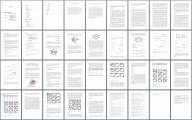基于深度学习的分类算法研究

基于深度学习的分类算法研究(外文翻译,论文18000字)
摘要:随着大数据时代的到来,我们的生活充斥着海量的信息,数据挖掘技术是这个信息飞速发展的时代中十分重要的工具,它可以帮助我们在海量的信息中挖掘出有价值和有意义的信息。分类器是数据挖掘技术中常用的算法模型,它可以首先对已知样本的属性和标签进行学习,生成分类器模型,之后对未知样本的标签进行预测。本文首先对常用的分类器算法模型:反馈传播神经网络(BackPropagation Neural Network)和支持向量机(Support Vector Machine)的原理和算法流程进行详细说明,并将深度学习的思想模型进行阐述,提出分类器和深度学习模型相结合的新的分类算法模型。同时在UCI数据集上的对比实验表明,先利用深度学习模型中的限制玻尔兹曼机算法对数据进行特征提取再利用支持向量机分类算法进行分类的效果要优于原始支持向量机分类算法;多层的反馈传播神经网络多层感知机分类准确率高于原始支持向量机分类算法。
关键词:机器学习;深度学习;支持向量机;反馈传播神经网络神经网络
Study on Classification Algorithm Based on Deep Learning
Abstract:With the arrival of the big data Era, our life is full of huge amount of information;data mining is a very important tool in this era with rapid development of information, which can help dig out valuable and meaningful information in vast amounts of information.Classifier is an algorithm model commonly used in data mining and it could learn the attributes and labels of the samples that we already know and then build classifier model,after which, it could predict the labels of the unknown samples. This paper first describe theprinciple and algorithm flow of the commonly used algorithm model: BackPropagation Neural Networkand Support Vector Machine in detail and the deep learning model of mind is expounded, putting forward a new classification algorithm model that combine classifier and deep learning model. At the same time, the comparative experiments on the UCI data sets show that the classification algorithm that utilize Restricted Boltzmann Machine to have data feature extraction and then utilize Support Vector Machine to classify outperform the original Support Vector Machine classification algorithm and that multilayer perceptron in multilayer BackPropagation Neural Network has a higher classification accuracy than the original Support Vector Machine classification algorithm.
Key words:Machine Learning;Deep Learning;Support Vector Machine;BackPropagation Neural Network
[资料来源:www.doc163.com]

目录
1绪论 1
1.1 研究背景及意义 1
1.2研究现状及分析 2
1.2.1分类算法 2
1.2.2深度学习 4
1.3本文组织与结构 5
2常见分类算法模型及深度学习模型 5
2.1反馈传播神经网络 5
2.1.1人工神经网络 5
2.1.2BP神经网络模型 8
2.2 支持向量机 10
2.2.1 线性支持向量机算法原理 11
2.2.2 非线性SVM算法原理 12
2.2.3 支持向量机核函数选择 13
2.3 深度学习及相关模型 14
2.3.1 自动编码器 14
2.3.2 限制玻尔兹曼机 15
2.4 本章小结 16
3基于深度学习的分类算法实验 16
3.1 评估方法 16
3.2准确率对比分类算法 16
3.3 基于UCI数据集的SVM分类算法测试 17
3.3.1 数据集选取及设置 17
3.3.2 分类实验结果 17
3.4 基于UCI数据集的RBM降维SVM分类算法测试 19
3.4.1 数据集选取及设置 19
3.4.2 分类实验结果 20
3.5 基于UCI数据集的BP神经网络分类算法测试 21
3.5.1 数据集选取及设置 21
3.5.2 分类实验结果 22
3.6 SVM和基于深度学习的SVM分类算法结果对比 23
3.6.1 比较对象 24
3.6.2 准确率比较结果 24
3.7算法结果对比 25
3.7.1 比较对象 25
3.7.2 准确率比较结果 25
3.8 本章小结 26 [来源:http://www.doc163.com]
4总结与展望 27
4.1 总结 27
4.2 展望 27
参考文献: 28
致谢 31 [资料来源:www.doc163.com]
